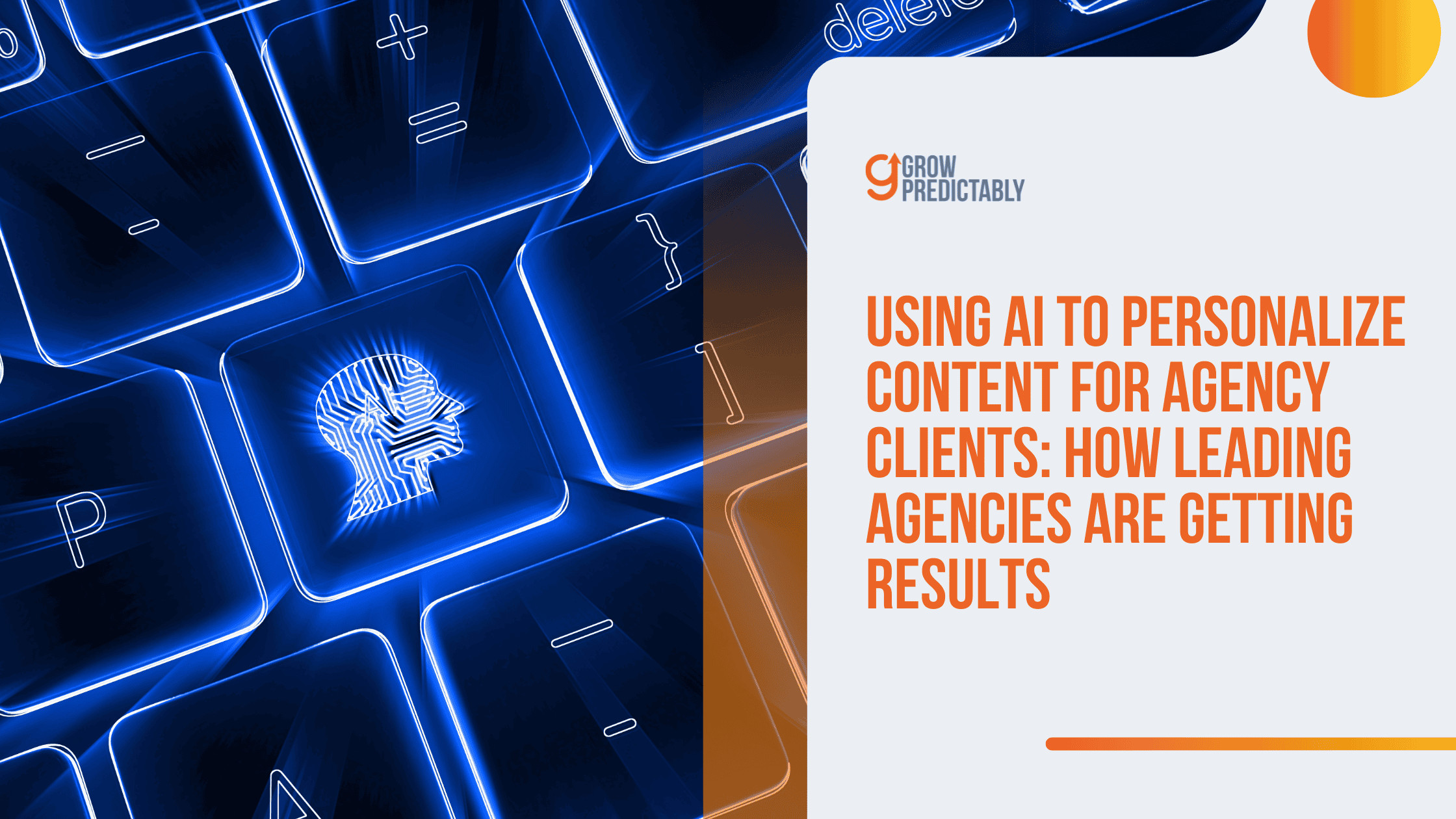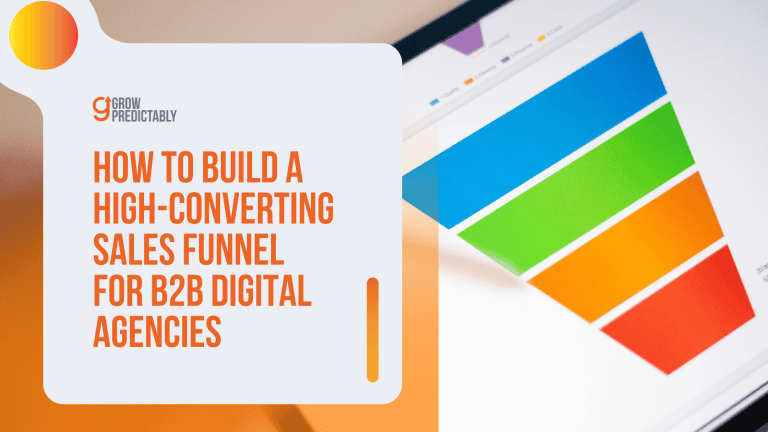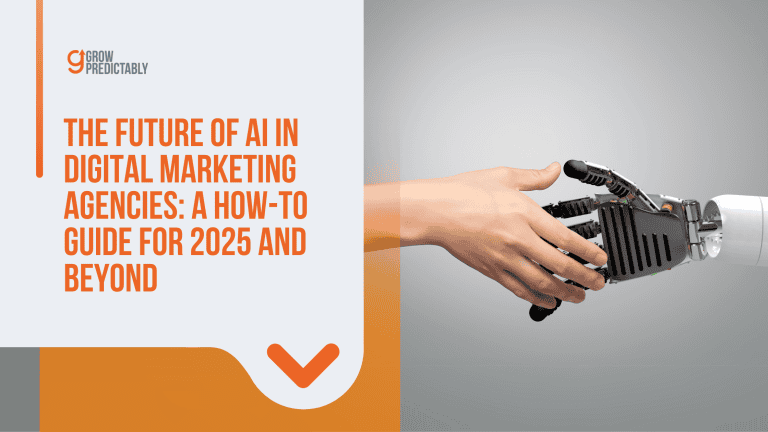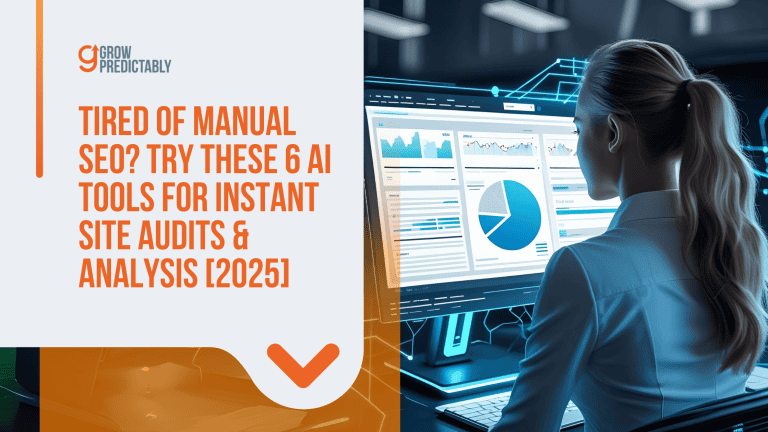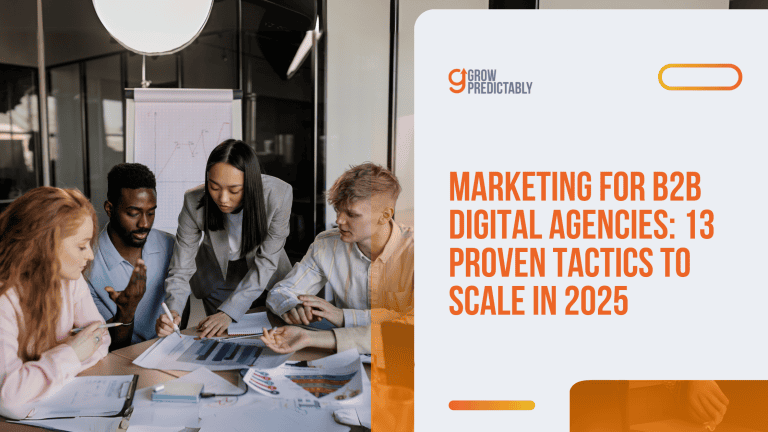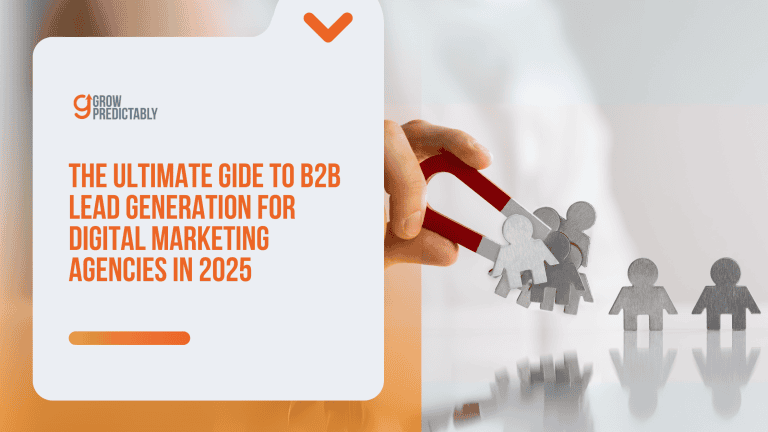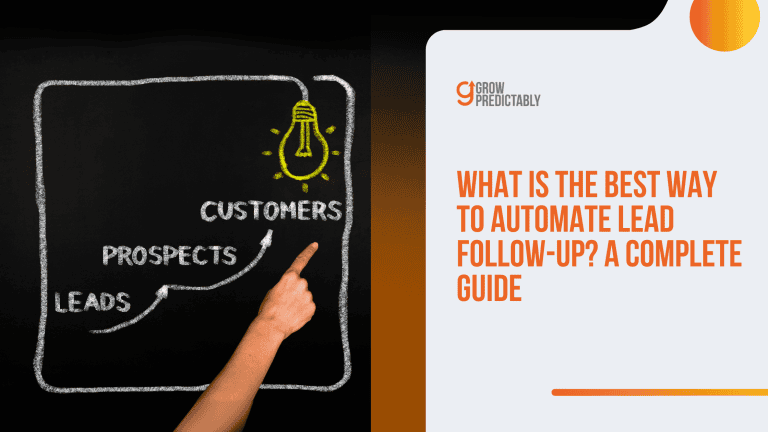Using AI to Personalize Content for Agency Clients: How Leading Agencies Are Getting Results
Is your agency stuck in an endless cycle of creating “sort-of” personalized content for clients?
You know the drill—you’re working crazy hours trying to customize materials, but still feeling like you’re barely scratching the surface of true personalization.
And let’s be honest, your clients are starting to notice too.
Here’s something that might make you sit up: Epsilon found that a personalized experience drives 40% higher conversion rates compared to generic approaches.
Let me tell you, AI isn’t just another buzzword to throw around in client meetings.
It’s a game-changer that analyzes client data in ways we humans simply can’t match, identifies audience patterns we’d miss, and generates truly tailored content at scale.
By automating these tasks, AI leads to improved efficiency, freeing up resources for more strategic endeavors.
Your clients get better engagement, you deliver better ROI, and suddenly you’re not just another agency—you’re their indispensable partner.
Stick with me through this article, and I’ll show you exactly how to use AI to deliver personalized content that makes your clients say “wow” instead of “when is our contract up?”
Because I’m betting you’re curious about what happens when you finally start understanding what your clients’ audiences truly want—not what you think they want.
I. Understand What AI Personalization Means for Agencies
The days of generic content for agency clients are dead.
When you implement AI personalization correctly, you’re not just improving engagement – you’re fundamentally changing the economics of your client relationships.
By leveraging AI powered personalization, you can create personalized marketing campaigns that target specific audiences with tailored messaging, supported by insights gained from user behavior analysis.
Let me show you exactly how this works in plain English.
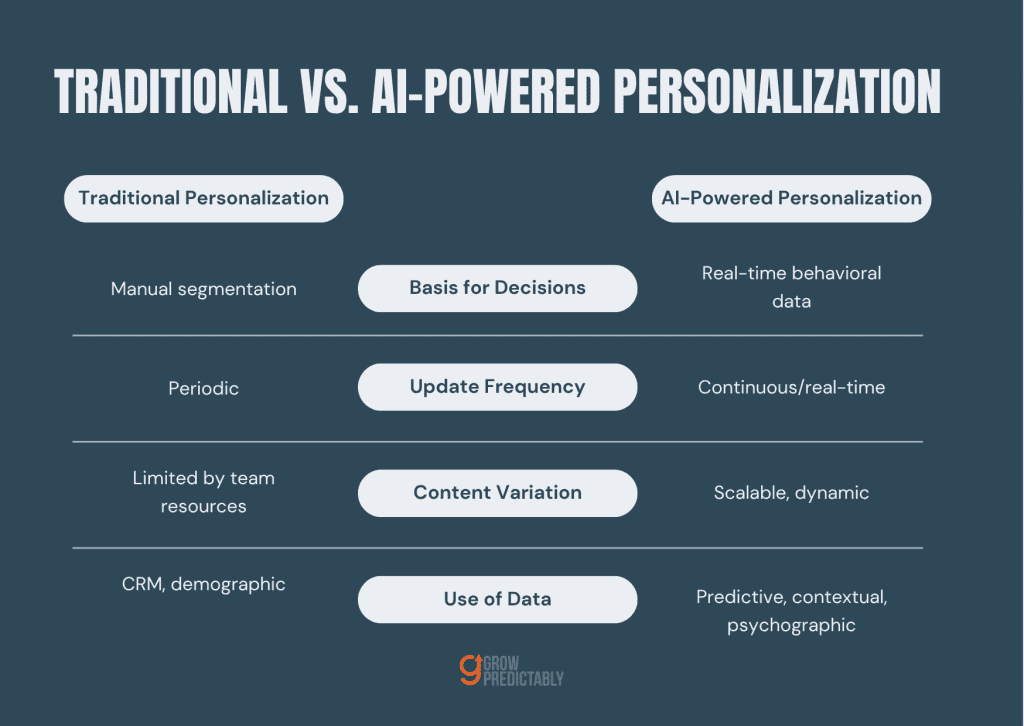
The Raw Revenue Impact of AI
Businesses implementing AI personalization aren’t just seeing marginally better results – they’re crushing their previous numbers with up to 15% higher sales according to Harvard Business Review.
That’s not some theoretical improvement – it’s cold, hard cash your agency clients are leaving on the table right now.
The difference between agencies that dominate and those that disappear is simple: the winners are analyzing historical data to turn client interactions into personalized experiences that convert and improve customer satisfaction.
Your competitors are selling the same tired “creative” solutions while smart agencies are using AI to personalize every touchpoint.
When you show clients you can deliver messaging that feels like it was created specifically for each individual customer, price objections magically disappear.
Your value becomes undeniable.
How AI Actually Works (Without the BS)
Artificial intelligence personalization isn’t complicated rocket science – it’s pattern recognition on steroids.
It looks at what people do, what they engage with, when they buy, and what they ignore.
Then it serves them exactly what they want before they even know they want it.
Three core technologies make this possible:
- Machine learning algorithms that identify patterns in customer behavior faster than any human analyst could
- Natural language processing that creates and adapts human-like text that doesn’t sound robotic
- Predictive analytics that forecast what specific customers will likely do next based on their history
- Contextual data that enhances the effectiveness of personalization efforts by considering factors like device, location, and time
The real power comes when you combine these technologies with your agency’s creative expertise.
Your designers and copywriters aren’t being replaced – they’re being supercharged.
They can focus on high-level strategy and creative direction while AI handles the heavy lifting of personalization at scale.
Starting With Clean Data
The biggest mistake agencies make is feeding garbage data into premium AI tools.
If you’re working with messy, unorganized client data, even the best AI will produce mediocre results.
According to Gartner, organizations believe poor data quality is responsible for an average of $15 million per year in losses.
Start by auditing your client’s customer data sources:
- Customer demographics and basic information
- Behavioral data (site visits, content engagement, past purchases, purchase history)
- Campaign interaction metrics (email opens, ad clicks, conversion points)
Once you’ve cleaned and organized these data points, you’re ready to implement personalization that actually works.
Your AI systems need clear signals to produce meaningful outputs.
When clients see you taking this foundational step seriously, they immediately recognize you’re not just another agency throwing around buzzwords.
II. Audit and Prepare Client Data for AI Personalization
Before you dive into fancy AI tools, there’s a critical first step that most agencies skip – and it costs them everything.
Getting your client data organized isn’t just some boring administrative task.
Data collection is crucial for AI content personalization, as it enhances AI’s ability to automate data analysis and tailor marketing strategies based on user behavior and trends.
It’s the foundation that makes or breaks your personalization efforts.
Let me walk you through exactly how to do this right.
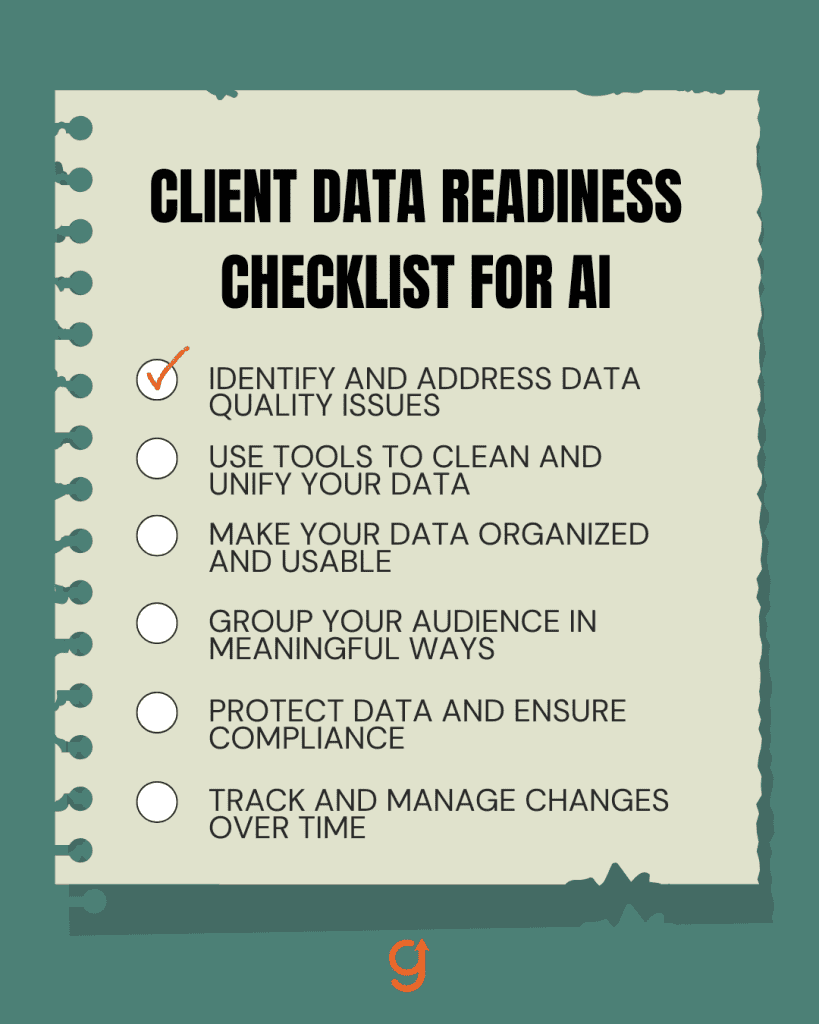
What Data Really Matters
The key to powerful personalization isn’t having endless data – it’s having the right data that actually drives decisions.
According to Segment’s State of Personalization Report, businesses that prepare their data properly see up to 30% higher ROI on their personalization efforts.
Your most valuable data sources include:
- CRM records (contact info, purchase patterns)
- Website behavior tracking
- Campaign performance stats
- Direct customer feedback
- Data from various customer touchpoints
- Data from customers based on their demographics and past behaviors
Most agencies overthink this step.
You don’t need perfect data to start – you need actionable data.
I worked with an agency that transformed a client’s results using just email engagement data and purchase history.
They ignored all the other metrics and focused on what actually moved the needle.
Your 6-Step Data Prep Plan
1. Run a Data Audit
- Check for duplicate entries
- Flag missing field
- Note outdated information
2. Clean House
Tools that help:
- HubSpot CRM (perfect for smaller businesses)
- Salesforce (built for bigger operations)
- Data unification platforms like Segment
3. Structure Your Data
- Create a consistent naming rule
- Set up clear categories
- Build unified customer profiles
4. Smart Segmentation
Group your audience by:
- Buying signals
- Engagement patterns
- Where are they in their journey
5. Security First
- Encrypt sensitive info
- Follow privacy rules (GDPR/CCPA)
- Document your security steps
6. Keep Track
- Note all data updates
- Save previous versions
- Create clear update rules
Automate data collection and use an AI system to provide visual representations and deliver actionable insights
The biggest mistake agencies make is waiting for “perfect data” before starting.
Start with the cleanest segment you have right now.
Even basic contact info with recent interaction data can power meaningful personalization.
Build momentum with quick wins, then expand as you clean more data sources.
Common Data Traps to Avoid
Most agencies fall into the same predictable traps when preparing data.
They try to boil the ocean by cleaning everything at once.
They over-complicate their segmentation models.
Or they spend weeks categorizing data that won’t actually impact personalization results.
If you’re dealing with particularly messy client data and limited resources, start small to achieve meaningful results despite financial constraints: consider leveraging dynamic pricing strategies. AI can help adjust prices based on customer demand, competition, and time-sensitive factors, optimizing revenue and improving user conversion rates.
- Pick one client segment
- Clean their basic contact info
- Add their latest interactions
- Build from there
I’ve seen agencies waste months trying to perfect their data when they could have been running campaigns and improving as they go.
Perfect is the enemy of progress.
The agencies that win aren’t the ones with perfect data – they’re the ones who start now with what they have and continuously improve.
Remember: Good personalization starts with good data.
Take time to get this right – your future campaigns will thank you!
III. Select and Integrate AI Tools Tailored for Agency Client Personalization
Picking the right AI-powered tools for personalization isn’t about chasing shiny objects or the latest tech; it’s about finding tools that effectively create content tailored for social platforms like YouTube, Instagram, and TikTok.
It’s about finding what actually delivers results for your specific client roster.
I’ve seen agencies waste six figures on enterprise solutions their teams never fully utilize.
Let’s make sure you don’t make the same expensive mistakes.
Understanding Your Clients’ Needs
First, match your client profiles to the right tools using the Customer Avatar Canvas.
This framework isn’t just theory—it’s a practical way to identify exactly what level of personalization your clients actually need and will pay for by tailoring offerings to meet specific customer needs.
Before evaluating any tool, ensure you are targeting the right audience by answering these crucial questions:
• What industry are your clients in?
• What’s their realistic spending comfort zone?
• Which marketing channels matter most to their business?
Most agencies skip this step and end up with powerful tools that solve problems their clients don’t have.
I worked with an agency that bought an enterprise-level AI solution only to realize their mid-market clients couldn’t provide the data quality needed to make it work.
Don’t make that expensive mistake.
Comparing Top Tools That Actually Work
Here’s a straightforward comparison of top AI-powered software that deliver real results in content personalization and optimization for ecommerce businesses:
| Tool | Perfect Match | Standout Features | Cost Range | User Love |
| Amazon Personalize | E-commerce/media | Real-time product suggestions | $5K-15K/mo | G2: 4.3/5 |
| HubSpot AI | Growing B2B | Smart email + CRM integration | $800-3K/mo | G2: 4.5/5 |
| Salesforce Einstein Copilot | Large B2B | Smart insights + GPT writing | $15K+/mo | Gartner Leader |
| Idomoo | Video-first agencies | Mass video personalization | $2K-8K/mo | Capterra: 4.6/5 |
According to Gartner’s Marketing Technology Survey, 58% of marketing leaders report that their martech investments go underutilized.
The problem isn’t the technology—it’s the selection process.
Choose tools based on client needs, not feature lists.
How to Choose Without Getting Overwhelmed
Ready to pick your tool? Follow this process:
- Match features to needs
• Got e-commerce clients? Amazon Personalize speaks their language
• Running B2B campaigns? HubSpot AI might be your sweet spot
• Want to enhance AI-driven personalization? Leverage real-time data to create personalized user experiences and optimize marketing campaigns
- Check your tech fit
• Will it play nice with your current tools?
• Can your team learn it without headaches?
- Start small
• Pick one client segment and run a test with a free trial
• Win there, then grow
I’ve seen agencies transform their business with a single well-chosen tool.
One digital agency I worked with started with just HubSpot’s basic personalization features for a single e-commerce client, focusing on content creation to engage their audience.
They perfected their process there before expanding.
Within eight months, they had built a specialized practice that commanded premium rates because they could show actual results.
Navigating Common Integration Challenges
Most agencies hit these predictable roadblocks when implementing new AI tools:
➡️ Budget constraints:
Look for tools with pay-as-you-grow models. Many vendors will work with agencies on special pricing if you’re bringing multiple clients to the platform.
➡️ Technical limitations:
Evaluate the technical requirements upfront with your technology officer. If a tool needs developer resources you don’t have, it’s the wrong tool—no matter how impressive the features. Consider using an ai powered tool designed to process vast amounts of user data for personalized insights, which can streamline information retrieval and reduce the need for extensive developer input.
➡️ Adoption issues:
The best tool is useless if your team won’t use it. Involve your team in the selection process and factor in training time before promising results to clients.
Remember: The right tool isn’t about impressive features—it’s about what delivers measurable results for your specific clients.
The magic isn’t in the technology but in how you apply it to solve real business problems.
IV. Implement AI-Driven Personalization Strategies Step-by-Step
Most agencies dive into AI personalization with no real plan.
They buy expensive tools, generate some personalized content, then wonder why they’re not seeing results.
Let’s cut through that nonsense and implement a system that actually works by leveraging real time personalization and optimization to enhance marketing campaign efficiency and effectiveness.
I’ve broken this down into six actionable stages that you can implement immediately.
Define Your Goals
First, pick ONE stage of the Customer Value Journey (CVJ) to focus on.
Trying to personalize the entire customer journey at once is a recipe for failure.
I’ve never seen it work.
Ever.
Set a specific, measurable goal tied to that single CVJ stage by leveraging historical data from successful campaigns to generate relevant ideas for ad copy and visuals, ensuring you deliver the right message at the right time:
• Awareness stage? Target increasing time on site by 30%
• Convert stage? Aim for 25% more demo signups
• Ascend stage? Focus on boosting upsells by 40%
What makes this approach powerful is the compound effect.
When you improve one stage by 30%, then another by 25%, and another by 40%, you’re not getting a 95% total improvement—you’re multiplying these gains throughout the funnel.
This compounding effect is how small agencies create massive client results without massive budgets.
Most agencies fail because they try to boil the ocean.
They attempt to personalize everything at once and end up doing nothing well.
Don’t make that mistake. Pick one stage, crush it, then expand.
Journey Mapping
Next, map actual customer behaviors to specific CVJ stages.
This creates the framework for enhancing customer experience through personalization triggers based on user data and helps identify trends in customer behavior:
➡️ Map behaviors to stages
• Awareness: First-time website visits, specific page views
• Subscribe: Newsletter signups, guide downloads
• Convert: Demo requests, trial signups
• Excite: First product usage, feature adoption
• Ascend: Engagement with upsell materials
➡️ Identify transition signals
• What actions indicate someone is ready to move to the next stage?
• What behaviors signal they’re stuck?
According to McKinsey, companies that excel at personalization generate 40% more revenue from these activities than average players.
The difference is in how precisely they map customer behaviors.
The secret most agencies miss is that customer behavior is a better predictor of intent than anything a customer says.
Digital body language reveals true intent that surveys and focus groups often miss.
Your AI tools need these behavioral signals to work effectively.
Create a comprehensive list of every meaningful interaction a customer could have with your client’s brand.
Map each one to a specific journey stage. This behavioral mapping is the foundation of effective personalization—without it, you’re just guessing.
Smart Segmentation
Now use your AI tools to group customers into dynamic audience segments based on behavior patterns, not just demographics:
➡️ Create behavior-based segments
• Feature explorers (tried 3+ features in 7 days)
• Quick converters (demo request within 2 page views)
• Research-focused (downloaded multiple guides)
➡️ Assign personalization rules to each segment
• What content should each segment see?
• What offers resonate with each behavior pattern?
The advanced move here is to use hyper personalization to create dynamic segments that evolve as customer behavior changes.
Static segments become outdated the moment you create them.
With AI tools, you can automatically update audience segments based on real-time behavior.
A powerful approach is to segment based on engagement velocity—how quickly customers move through journey stages.
Fast movers need different messaging than slow researchers.
When you personalize based on pace, you meet customers exactly where they are in their decision process.
Content Personalization
Match your website content to each CVJ stage—this is where most agencies go wrong by creating random personalized content with no strategic framework. Instead, focus on creating personalized interactions by dynamically modifying website content based on user behavior and preferences to create tailored experiences:
➡️Align content with journey stages
• Awareness → Personalized blog recommendations
• Subscribe → Custom welcome sequences
• Convert → Tailored case studies
• Excite → Achievement celebrations
➡️ Create modular content components
• Headlines that can be swapped based on segment
• Body content with variable sections
• CTAs that change based on behavior
Don’t overcomplicate this.
Start with personalizing just one element—like email subject lines or CTAs—and measure the impact before expanding.
The key insight here is to build modular content systems rather than creating entirely separate content for each segment.
This makes scaling personalization possible.
Create standard templates with interchangeable sections that your AI tools can customize based on segment rules.
Another often-missed opportunity is personalizing based on outside factors like weather, local events, or time of day.
External factors can dramatically impact engagement rates and conversion likelihood when incorporated into your personalization strategy.
Automation Setup
Now set up your AI tools to trigger personalized messages and content based on specific behaviors:
➡️ Create behavior triggers
• 5 page views → Start educational drip sequence
• Demo completion → Launch custom onboarding
• 30 days active → Trigger success story
➡️Build feedback loops
• What happens if someone doesn’t engage?
• How do you adjust if they skip stages?
The beauty is once you set this up, it runs 24/7, delivering personalized experiences at scale.
This is how small agencies compete with the big players.
Behavior-triggered automation is where automating repetitive tasks and personalization get really powerful.
Your messages arrive exactly when the customer is most receptive.
This timing element often has a bigger impact than the content itself.
Most agencies focus all their energy on what to say but neglect when to say it.
The best-crafted message delivered at the wrong time will fail.
Set up automation triggers based on both positive behaviors (someone took action) and inaction (someone hasn’t engaged in 7 days).
The real magic happens when you create multi-path automations that adapt based on response.
If someone opens but doesn’t click, they get a different follow-up than someone who doesn’t open at all.
These adaptive pathways create genuinely personalized journeys that feel like one-to-one communication.
Testing & Optimization
Track which CVJ stage shows the biggest drop-offs and fix them first to improve customer retention, customer engagement, and overall customer satisfaction.
This is about fixing leaks, not creating fancy new features:
➡️Identify your biggest leaks
• Which stage has the highest abandonment rate?
• Where do people get stuck the longest?
➡️ Test personalization fixes
• A/B test different personalization approaches
• Measure impact on progression to next stage
Remember, you don’t need to get everything perfect.
You need to be better than your competition.
Start with fixing the biggest leaks in your funnel, and you’ll see immediate results.
Benefit Cosmetics implemented this approach and achieved a 50% jump in click-through rates with personalized triggered emails according to Think with Google.
They didn’t try to personalize everything—they focused on optimizing their biggest conversion opportunities first.
The hidden opportunity in optimization is compounding small wins.
A 10% improvement in three consecutive stages compounds to a 33% overall improvement.
This mathematical reality means you should fix several small leaks rather than obsessing over one perfect stage.
Set up a regular optimization calendar—weekly reviews for key metrics and monthly deep-dives into specific stages.
Document everything you learn.
Most agencies make the same mistakes repeatedly because they don’t track what they’ve already tried.
Finally, develop a hypothesis for each test.
Don’t just try random ideas.
Form a specific theory about why a certain personalization approach will improve results, then test it.
This scientific approach accelerates your learning and prevents wasting time on tactics that sound good but don’t deliver results.
FAQs
From Insight to Impact—Harness AI for Good Marketing
Personalization means more than inserting a first name in an email.
When powered by AI, ai content personalization becomes a precise system that interprets behavior, adapts content, and builds customer loyalty in ways we couldn’t dream of just five years ago.
You’ve learned how to lay the foundation with clean data, select the right tools based on your clients’ needs, and execute with smart segmentation and real-time automation.
Today’s customers expect more relevance and authenticity—AI helps you meet those expectations without burning out your team.
🛠️ Take action now: Choose one client segment, audit their data, and test a small AI-powered campaign this week.
Want to dive deeper? Explore:
📢 How can you balance automation with authenticity in your upcoming campaigns?
The future of digital marketing isn’t just more data—it’s smarter, human-first personalization that leverages AI to enhance human creativity.
Step into it!

